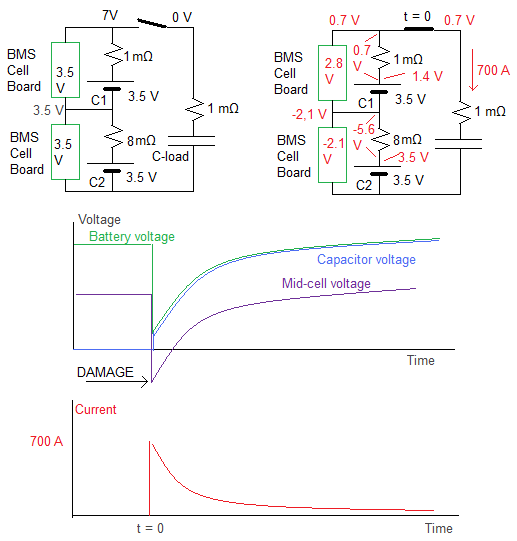 Li-Ion BMS
Li-Ion BMS
|
Home White Paper - Cell voltage reversal Direct connection to a capacitive load can reverse cell voltage, damage BMS 
Under these conditions:
the surge current results in an instantaneous reversal of the voltage of cells with the highest resistance. The cell may be handle that short-duration reversal in voltage; however, that voltage reversal, may damage the BMS:
The problem is exacerbated by:
When the load is first connected, a surge current charges its capacitance. The peak of that surge current can be very high, as it is limited only by the internal resistance of the cells and of the load. That surge current, dropped across the internal resistance of a cell, results in a drop of that cell's terminal voltage. If the current and the cell internal resistance are both sufficiently high, the voltage drop can exceed the Open Circuit Voltage of the cell; in that case, the terminal voltage of the cell will be reversed (the positive terminal will be more negative than the negative terminal). That voltage reversal, no matter how short-lived, may damage the BMS connected to that cell. 
Example of a 2-cell battery, connected to a low-resistance, high capacitance load, without precharge. Note that, if the resistance of all the cells is exaclty the same, the volatge will be divided equally, and no cell will be reversed. That may be possible with just a few cells in series, but becomes less and less likely with more and more cells in series. When connecting a battery to a capacitive load, start with a precharge stage, to charge the load slowly and at a limited current; then connect the battery directly to the load.
Davide Andrea, Elithion, 2/16/10 | ||
© 2008~2025 Davide Andrea. All rights reserved, except where noted by CC mark. Page published on Apr 18 2015. Graphic design by morninglori